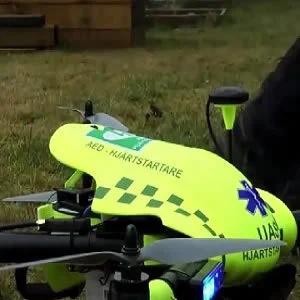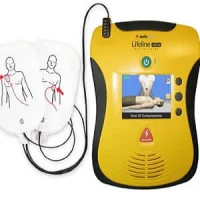According to a study published by JAMA, in simulated out-of-hospital cardiac arrests (OHCA), drones carrying an automated external defibrillator (AED) arrived in less time as compared to emergency medical services. There was also a reduction time of about 16 minutes.
OHCA has a low survival rate, around 8 to 10%. The most important factor that could improve survival is reducing time to defibrillation. Drones can be activated by a dispatcher, can carry an AED and can be sent to the emergency location so that the bystander there can use the defibrillator.
The drone was developed and certified by the Swedish Transportation Agency. It is equipped with AED and is placed at a fire station in the local municipality. It is also equipped with a global positioning system (GPS), a high-definition camera and an autopilot software system.
Eighteen simulated flights were performed within a 6.2 mile radius from the fire station. The median time from call to dispatch of EMS was 3:00 minutes while the median time from dispatch to drone launch was 3 seconds. Median time from dispatch to arrive of the drone was 5:21 minutes as compared to 22:00 minutes for the EMS. The drone arrived much faster than EMS and there was a median reduction in response time of 16:39 minutes.
“Saving 16 minutes is likely to be clinically important. Nonetheless, further test flights, technological development, and evaluation of integration with dispatch centers and aviation administrators are needed,” the authors write. “The outcomes of OHCA using the drone-delivered AED by bystanders vs resuscitation by EMS should be studied.”
Source: JAMA
Image & Video Credit: JAMA Network
References:
Claesson, Andreas et al. (2017) Time to Delivery of an Automated External Defibrillator Using a Drone for Simulated Out-of-Hospital Cardiac Arrests vs Emergency Medical Services. JAMA. doi:10.1001/jama.2017.3957
Latest Articles
emergency medical services, drones, OHCA, Out-Of-Hospital Cardiac Arrests, automated external defibrillator
According to a study published by JAMA, in simulated out-of-hospital cardiac arrests (OHCA), drones carrying an automated external defibrillator (AED) arrived in less time as compared to emergency medical services. There was also a reduction time of about










